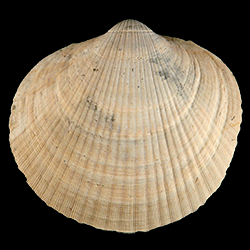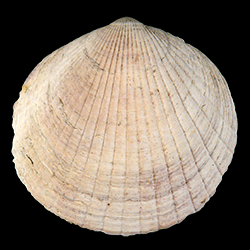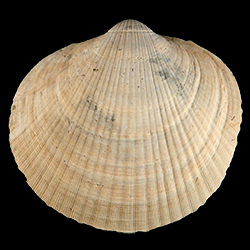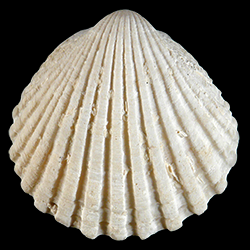
Glycymerididae

- Phylum: Mollusca
- Class: Bivalvia
- Order: Arcida
- Family: Glycymerididae
Overview
Common name: Bittersweet (or Dog Cockle) Clams.
Key morphological features: Shell shape subtrigonal to subcircular, equilateral, and equivalve. Taxodont hinge dentition; teeth often chevron-shaped and arranged "in anterior and posterior sets that diminish gradually in size towards middle and extremities" (p. N267). Isomyarian muscle arrangement. Source: Cox, L.R., et al. 1969. Systematic Descriptions, in Cox et al., eds., Treatise on Invertebrate Paleontology, Part N, Mollusca 6, Volume 1. The University of Kansas and Geological Society of America. 489 pp.
Geological range: Late Cretaceous to Recent (source: Cox et al., 1969, Treatise N267).
Geographic distribution: A distributional map for modern Gycymerididae may be accessed from OBIS. A distributional map for ancient Glycymerididae may be accessed from the Paleobiology Database.
Diversity: The WoRMS database recognizes 4 genera and 111 species of extant Glycymerididae (unvetted). The Paleobiology Database recognizes 9 genera and 105 species from the fossil record (unvetted).
Paleoecology: All Glycymerididae are suspension feeders. Species have either epifaunal or infaunal siphonate substrate interactions. All species are actively mobile (can crawl or burrow). Species are unattached to the substrate. Source: Todd (2016).
Phylogenetic status: Monophyletic. Recent molecular phylogenetic analyses by Combosch and Giribet (2016) support the monophyly of Family Glycymerididae.


